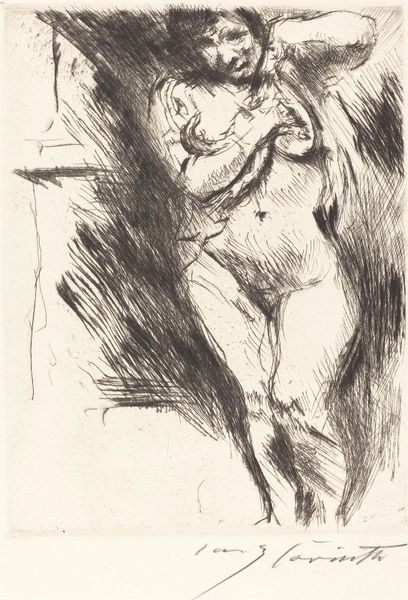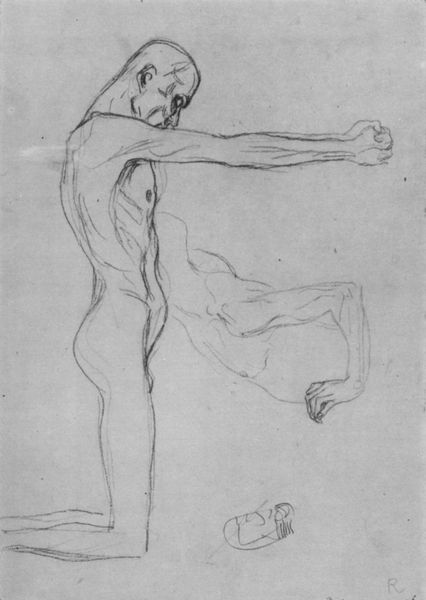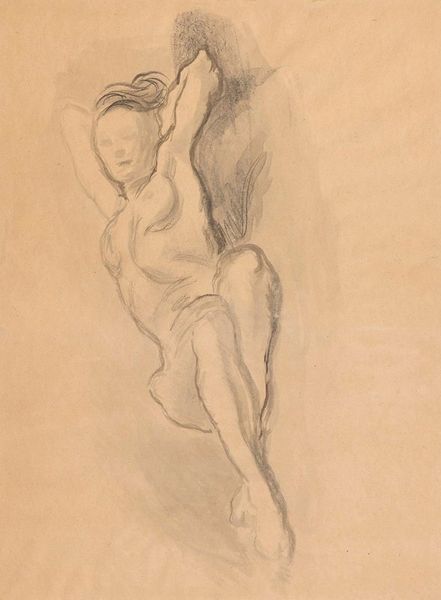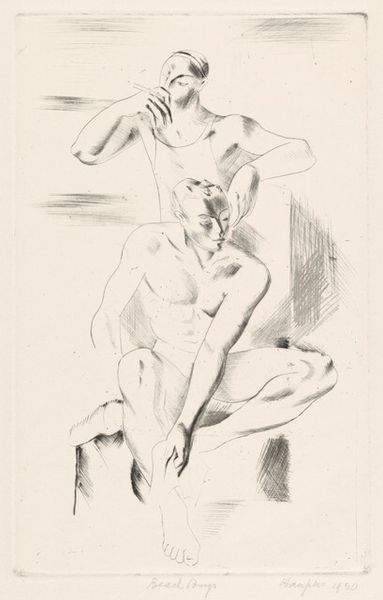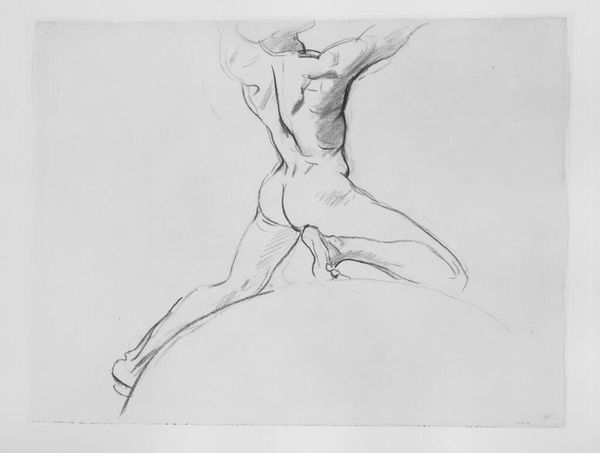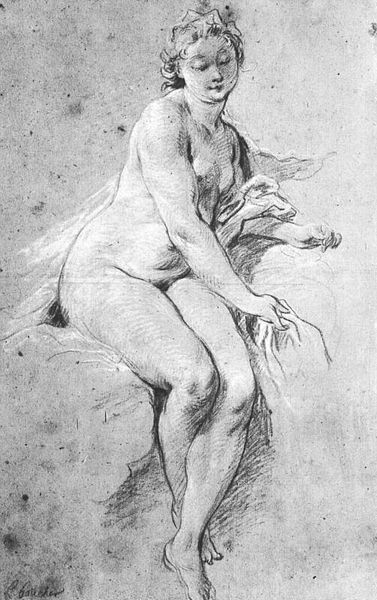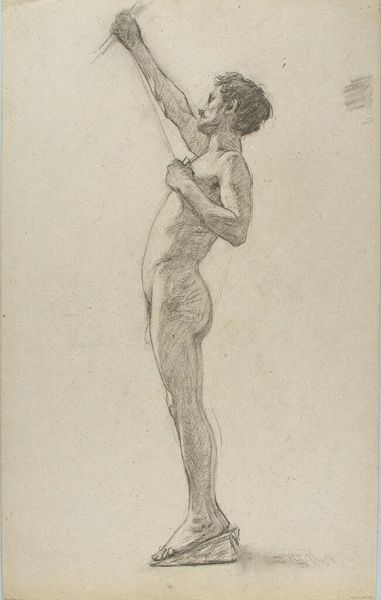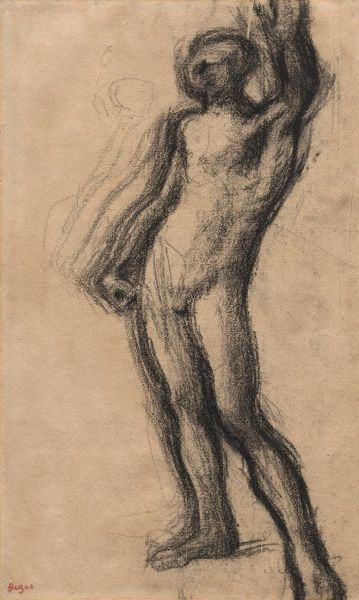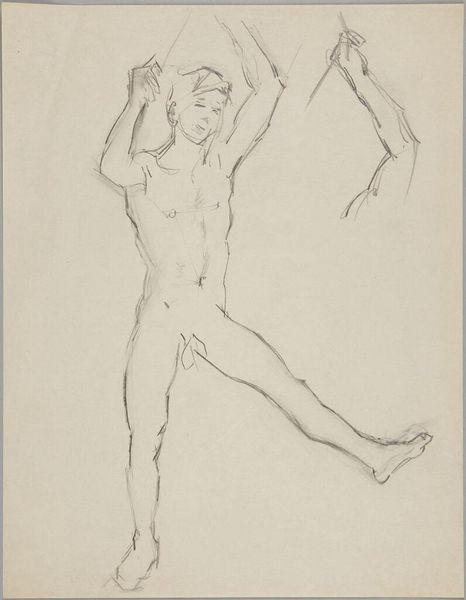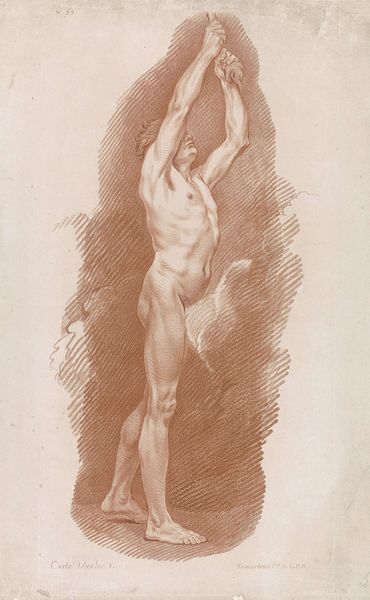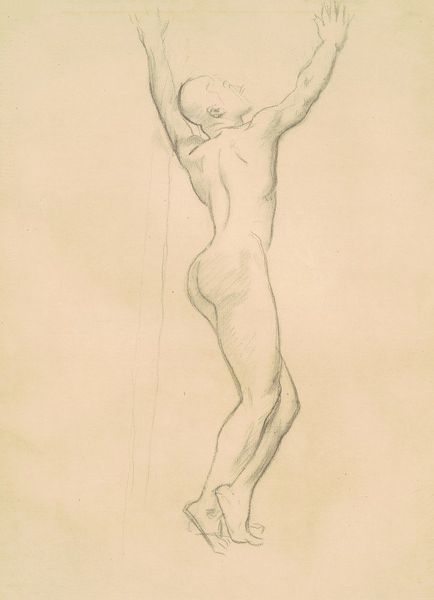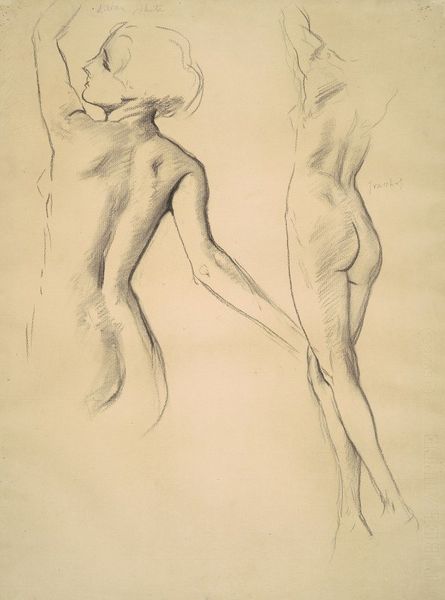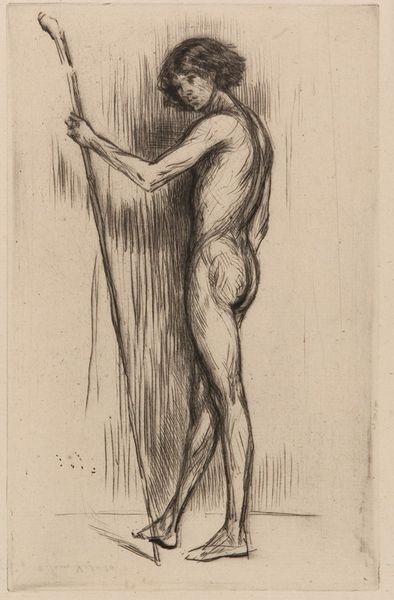
drawing, paper, ink
#
drawing
#
figuration
#
paper
#
ink
#
pen-ink sketch
#
nude
Copyright: Public Domain: Artvee
Helene Schjerfbeck made this ink drawing, "Dancing Nude Woman, after Diaz de la Pena," in the late 19th or early 20th century. It offers a glimpse into the artistic training and cultural milieu of its time. During this period, it was common for artists to study by copying the works of established masters. Schjerfbeck, a Finnish artist, would have engaged with the work of Narcisse Virgile Diaz de la Pena as part of her academic training, likely within the institutional setting of an art academy. The choice of a nude figure reflects the academic emphasis on classical forms and the human body as a subject of study. However, the loose, expressive lines also hint at a departure from strict academic conventions, perhaps influenced by emerging modernist trends. To fully understand this work, one might delve into the curriculum of art academies at the time, exploring how they shaped artistic practice and taste. Research into the reception of Diaz's work in Finland could also shed light on Schjerfbeck's artistic choices. In the end, it is clear that the meaning of art is contingent on social and institutional context.
Comments
No comments
Be the first to comment and join the conversation on the ultimate creative platform.
